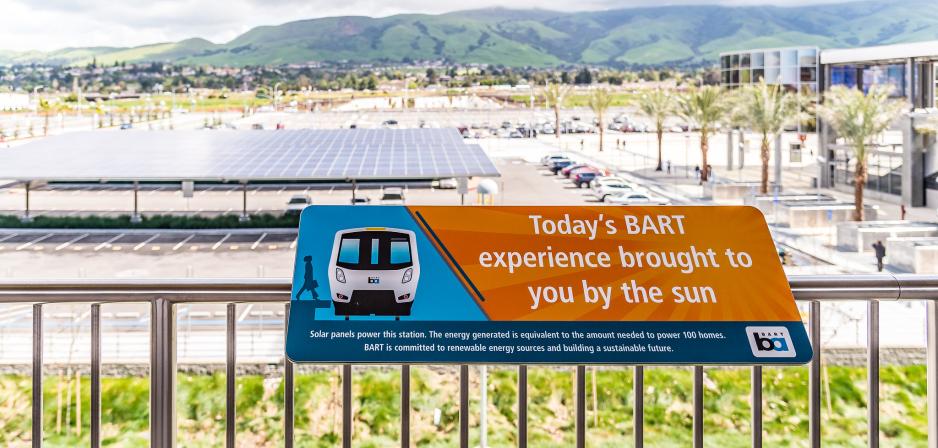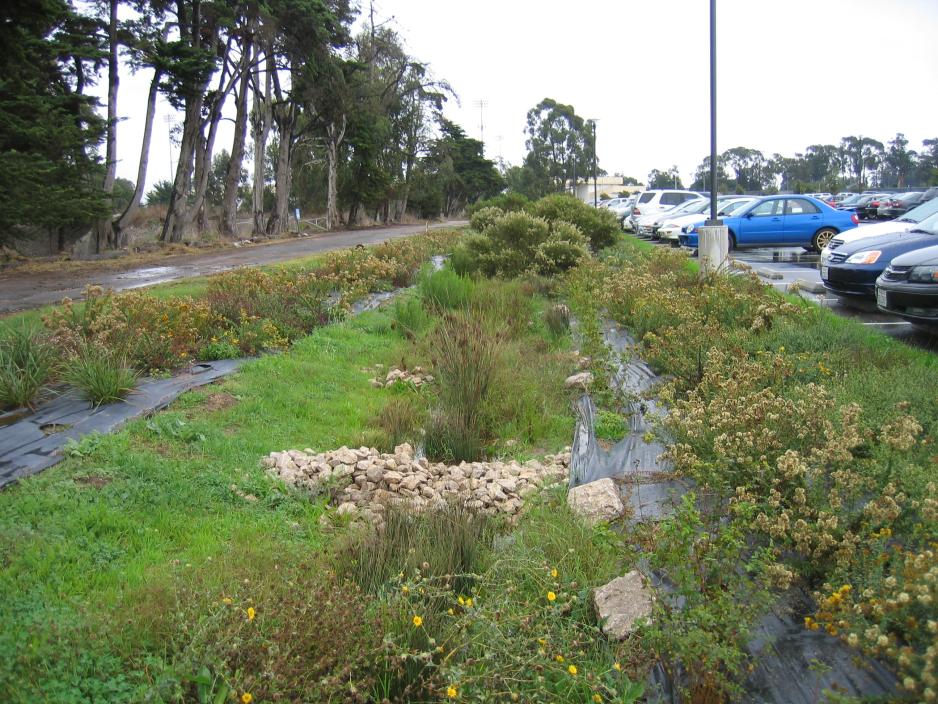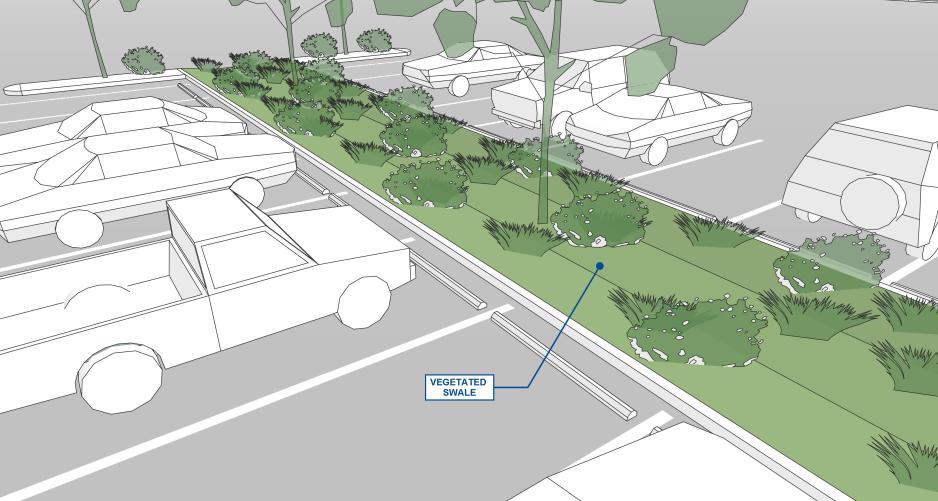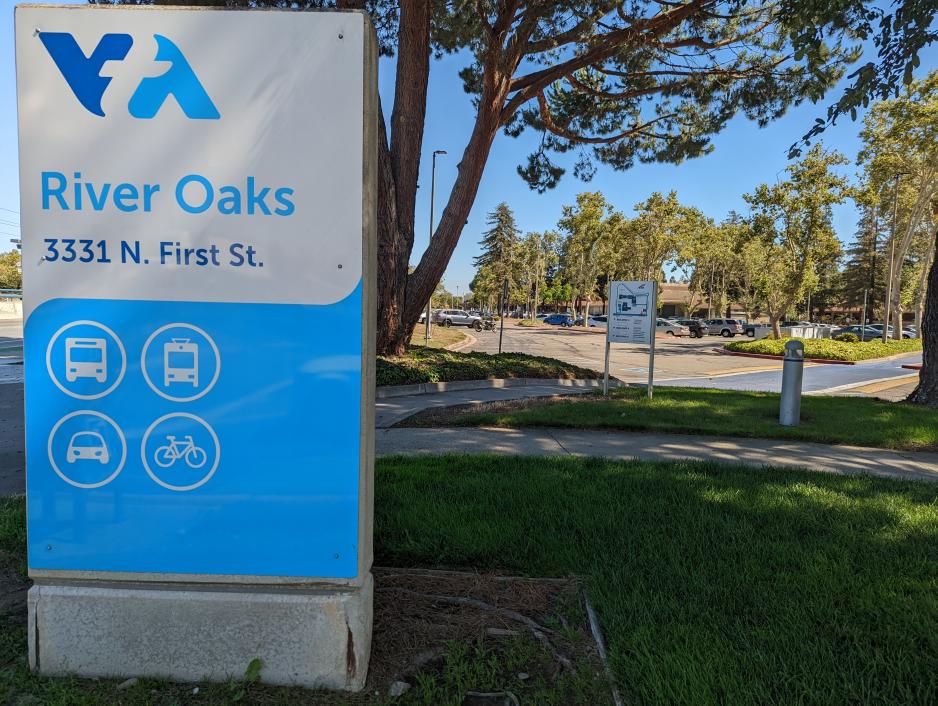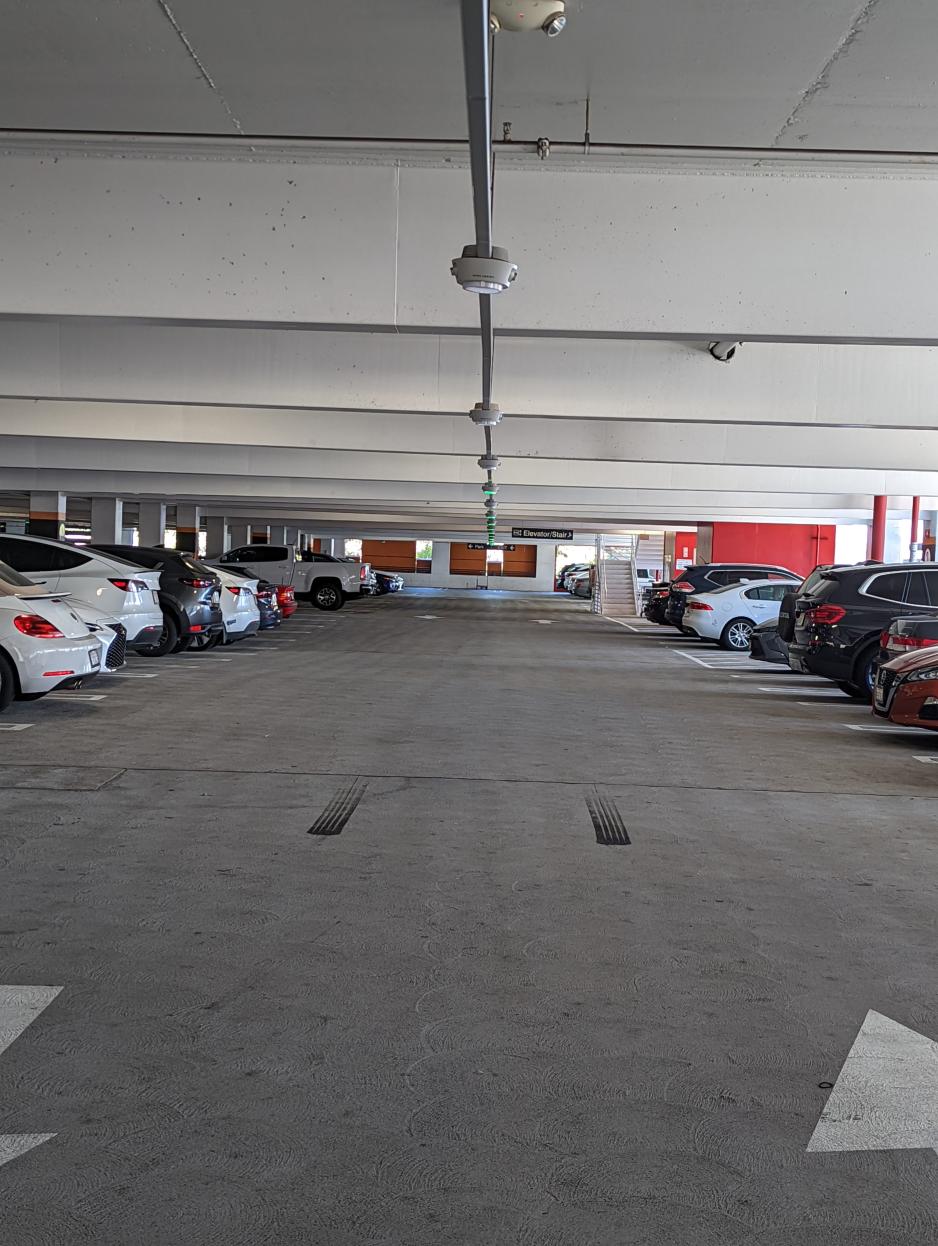Promote energy efficiency and a high level of environmental quality at parking lots and structures.
Provision energy efficient parking facilities that encourage greater public transit use, reduce heat island effect, and lower cooling costs for structures.
Body
Provision high environmental quality parking facilities that improve water quality by filtering and cooling though stormwater best management practices, including vegetated swales and rain gardens.
Balance parking design and capacity between functionality and environmental quality by minimizing impacts to mature vegetation or soil stability.
Develop park-and-ride facilities where applicable to mitigate traffic congestion and its environmentally negative effects.
Integrate technology to maximize parking capacity and vehicle flow while minimizing circling or idling.
